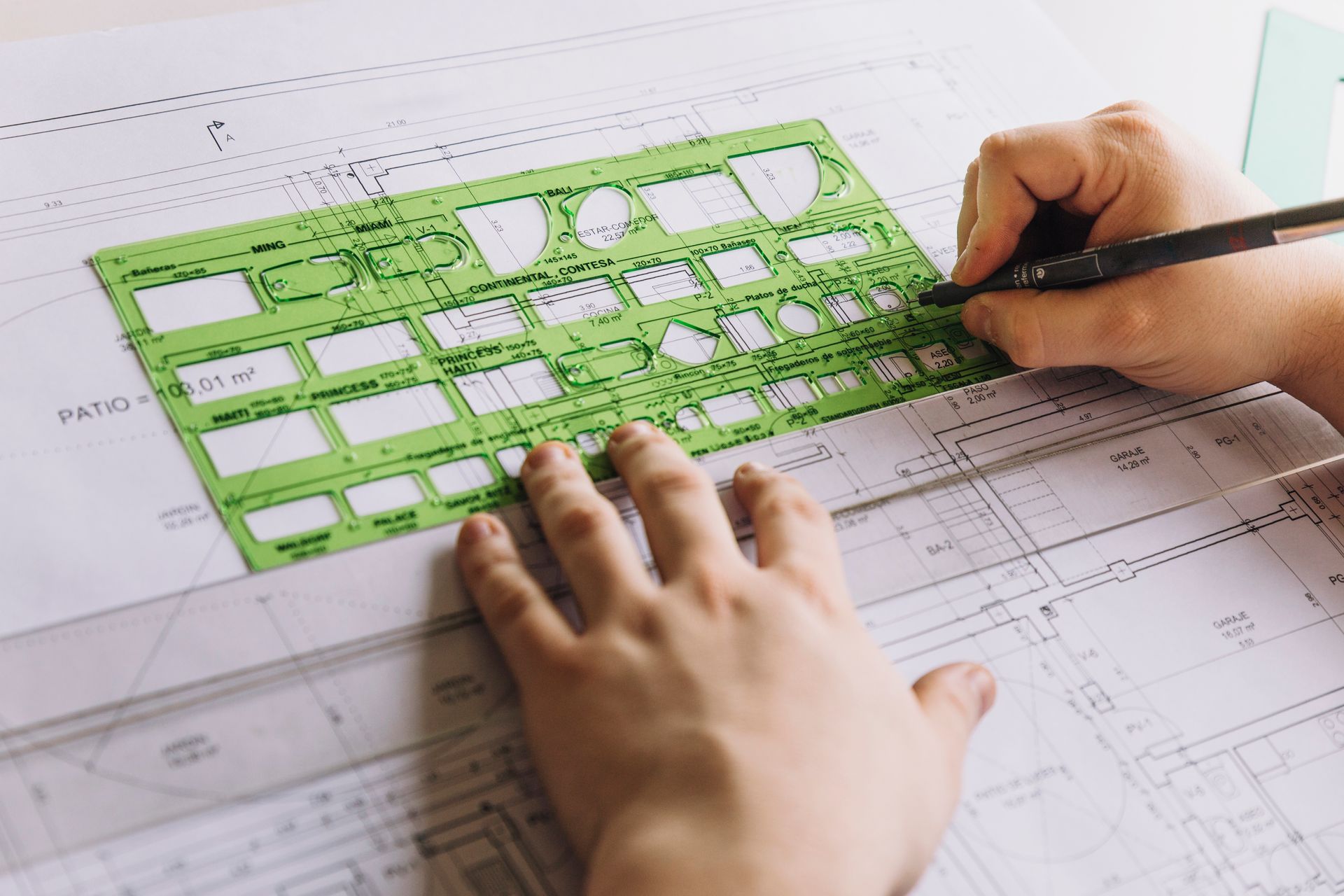Accurate Plot Plans for Your Property | Expert Surveyors
Starting a building project often begins with paperwork, not construction. One of the most important documents is the plot plan for my property. Cities require this plan because it shows how proposed structures fit within the boundaries of the land. Without it, local officials cannot confirm that the work follows zoning laws, utility clearances, and spacing requirements. A missing or inaccurate plan can cause delays, penalties, or even force homeowners to redo work already completed.
The Purpose Behind Plot Plan Requirements
Municipalities rely on plot plans to maintain order across neighborhoods. These documents show exact measurements, property lines, and the placement of new or existing structures. By reviewing them, officials confirm that construction will not interfere with nearby utilities or encroach on a neighbor’s lot. This protects both the homeowner and the community from disputes or unsafe building practices.
How Plot Plans Support Zoning and Safety Rules
Every property is subject to zoning codes that dictate what can be built and where. A shed, garage, or addition cannot simply be placed anywhere on the lot. The plot plan proves whether a project stays within these guidelines. For example, cities often enforce setbacks to keep buildings a safe distance from fences, easements, or roads. Submitting a clear plan allows zoning officers to quickly identify if the project complies with all restrictions before a permit is issued.
Avoiding Costly Mistakes Through Proper Documentation
One of the most common reasons projects stall is inaccurate or incomplete plans. If a structure is built outside of approved dimensions or too close to a property line, cities may issue violation notices. Correcting these mistakes usually involves hiring survey professionals, resubmitting documents, or moving the structure. A well-prepared plan prevents these setbacks and keeps construction moving forward without unnecessary expenses.
The Role of Plot Plans in Utility Protection
Underground and overhead utilities often run close to property boundaries. A plot plan provides details that help ensure new construction does not interfere with water lines, electrical systems, or drainage routes. Cities use this information to avoid hazards that can damage infrastructure or create safety risks for residents. By requiring plans before work begins, officials reduce the chance of accidents and costly repairs.
Streamlining the Inspection and Approval Process
Inspectors compare the approved plot plan with the physical site throughout construction. This reference speeds up the review process since officials have a reliable document to verify placement and measurements.
Without it, inspections can take longer and may require repeated visits. For homeowners, this means longer wait times and higher risk of non-compliance. A proper plan also allows inspectors to sign off on projects with confidence. They can measure setbacks quickly, confirm boundaries, and ensure compliance with building codes.
Why Professional Preparation Makes a Difference
Many homeowners attempt to draft their own plot plans, but even small measurement errors can trigger issues later. Professionals use precise surveying equipment and mapping software to prepare documents that meet city standards.
These plans are easier for officials to approve and reduce the chance of rejections. Working with experts ensures the property owner has a legally sound plan that stands up to inspection. Surveying professionals also understand local codes better than most homeowners. They know how each city interprets setbacks, easements, and zoning restrictions.
Common Situations Where Plot Plans Are Required
A city may request a plot plan for several types of projects, not only for new home construction. Some common cases include:
• Building sheds, detached garages, or small accessory units
• Adding decks, patios, or extended porches
• Expanding an existing house with new rooms or levels
• Installing swimming pools or hot tubs
• Constructing large driveways or paved areas
• Erecting boundary fences that may affect neighboring lots
Each of these projects changes how land is used, which is why accurate documentation is necessary for city approval. Whether small or large, every structure alters the property footprint, and cities need proof that the design complies with all local standards.
Benefits for Property Owners Beyond Compliance
While cities focus on compliance, homeowners themselves gain significant advantages from having a current plot plan, such as:
• Clear record of property boundaries to avoid neighbor disputes
• Supporting refinancing or resale with official documentation
• Peace of mind that construction is legally approved
• Avoiding fines and enforcement actions from local authorities
• Faster inspections and smoother permitting process
• Reliable guidance for future building or landscaping projects
A precise plot plan not only satisfies city requirements but also serves as a valuable long-term reference for property owners. Having an updated document on hand makes it easier to plan future improvements, resolve questions from lenders, and demonstrate property value during a sale.
Ending Note:
Cities require a plot plan because it ensures safety, compliance, and fairness for everyone involved. Without one, property owners risk costly violations and construction delays. If you are asking yourself where to find a “professional land surveyor near me”, our team at RealMapInfo LLC specializes in preparing accurate plot plans and offering professional land survey services that meet municipal requirements. Our expertise helps homeowners avoid mistakes, save time, and complete projects with confidence.
Contact RealMapInfo LLC today to secure a compliant plot plan for your property and start your construction the right way.
FAQs:
Q1. Why do cities ask for a plot plan before construction?
Cities require plot plans to confirm projects follow zoning rules, setbacks, and property boundaries.
Q2. What details are included in a plot plan?
It shows property lines, measurements, existing structures, and the proposed location of new construction.
Q3. Can I create my own plot plan for permits?
You can, but errors are common. A professional survey ensures accuracy and faster approval.
Q4. Do all building projects need a plot plan?
Most projects do, including sheds, pools, additions, garages, and driveways, since they change property use.
Q5. How does a plot plan help property owners long-term?
It prevents boundary disputes, supports refinancing or selling, and guides future building or landscaping projects.












Share On: